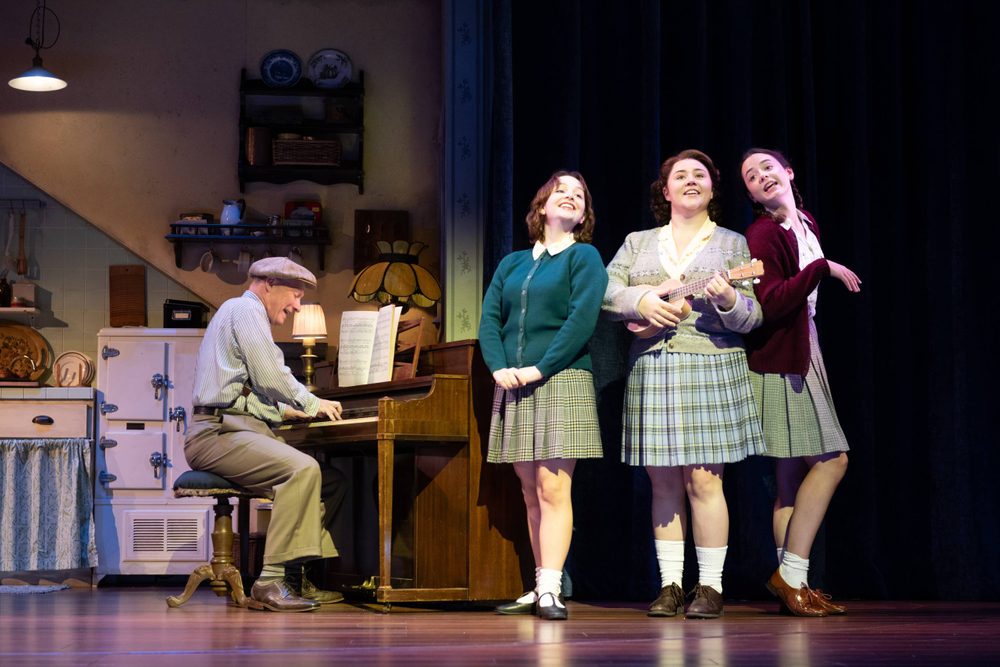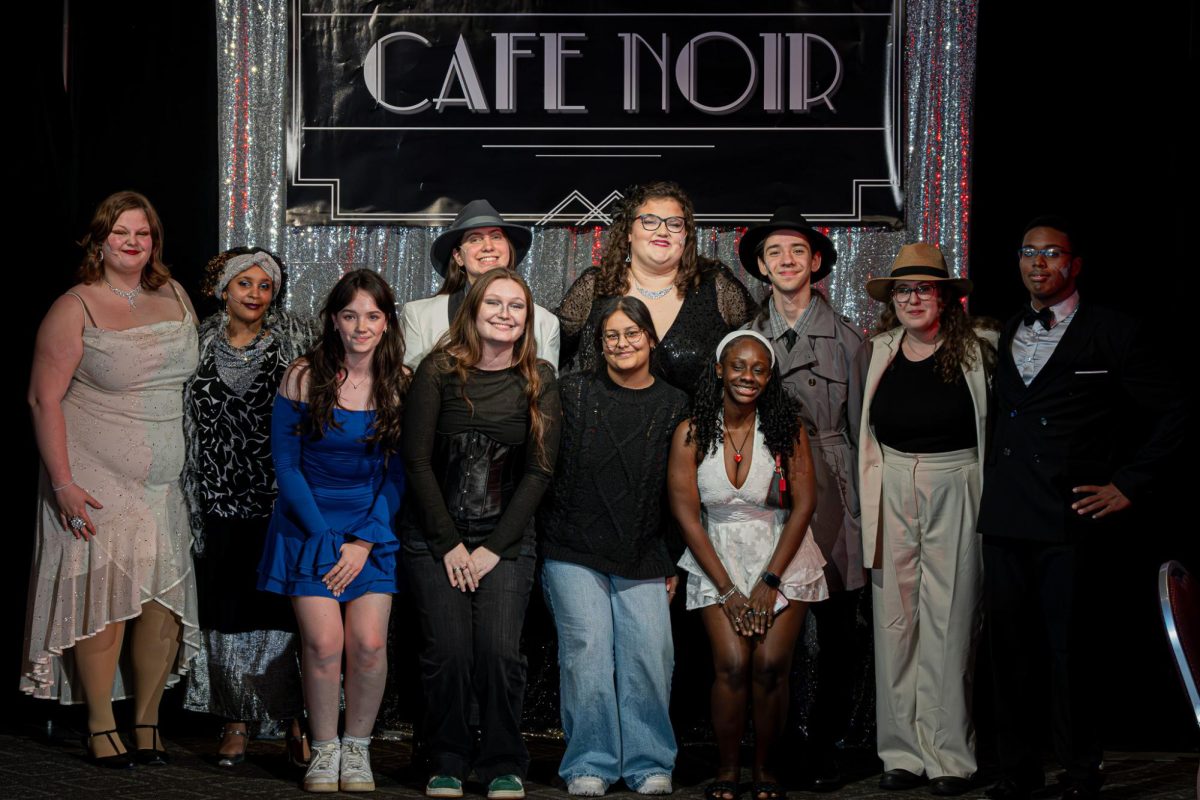The Spring Showcase 2018, featured “Acting 101/ Ames Room,” directed and written by Elektra Newman, and “I Enjoy Being a Girl,” a cabaret directed and choreographed by Victoria Isotti. “Acting 101/ Ames,” room represents a journey toward fulfillment and happiness, while “I Enjoy Being a Girl” is a historical path about female empowerment.
“Theater is the whore of art,” one of the most memorable lines of the “Acting 101/ Ames Room play,” said by the unnamed mentor of the main character. The symbolism of unintentional objects, gestures and color oozing through easily delivered the concepts of loneliness, confusion and enlightenment.
The minimalist setting included a block interlaced with black and white, representing “dualism back in forth from one extreme to another” said Newman to The Suffolk Journal in a post-show interview. Minimalism was an important factor for Newman as this was a way of balancing the writer, director and designer ideas while including a touch of her style.
It begins with seven actors all dressed in solid black with seven different colors tied around the waist. From a simple view it may not mean much, but these seven fabrics represent “The seven chakras, days of the week, and colors of the rainbow,” said Newman.
The metaphorically complex play shows the journey of an unnamed character reaching nirvana through vignettes. The peculiar presentation was meant to give the audience “an individual and different journey with audience, creating unique and different opinions,” said Newman.
“It’s been a work in progress and seeing a person’s journey and very personal and everyone can leave with something,” said Newman, adding how this work took four years to complete. Newman began writing it since junior year of highschool, and over winter break completed the final script.
The second showcase, “I Enjoy Being a Girl” included a compilation of songs which Director Victoria Isotti explained as a timeline, beginning from the 1920’s to the 2000’s; choosing the song that best represented how women were portrayed during that decade.
Beginning with the song “He’s Gone Away,” there was a clear prominence of submissiveness and dependency. As the musical numbers passed by, little by little the tone becomes less complaint and yielding and the dances became more racy. The combination of red ruby lips and accessories with black clothing apart from representing the journey of sexuality for women, also “empowered the girls more,” said Isotti.




















